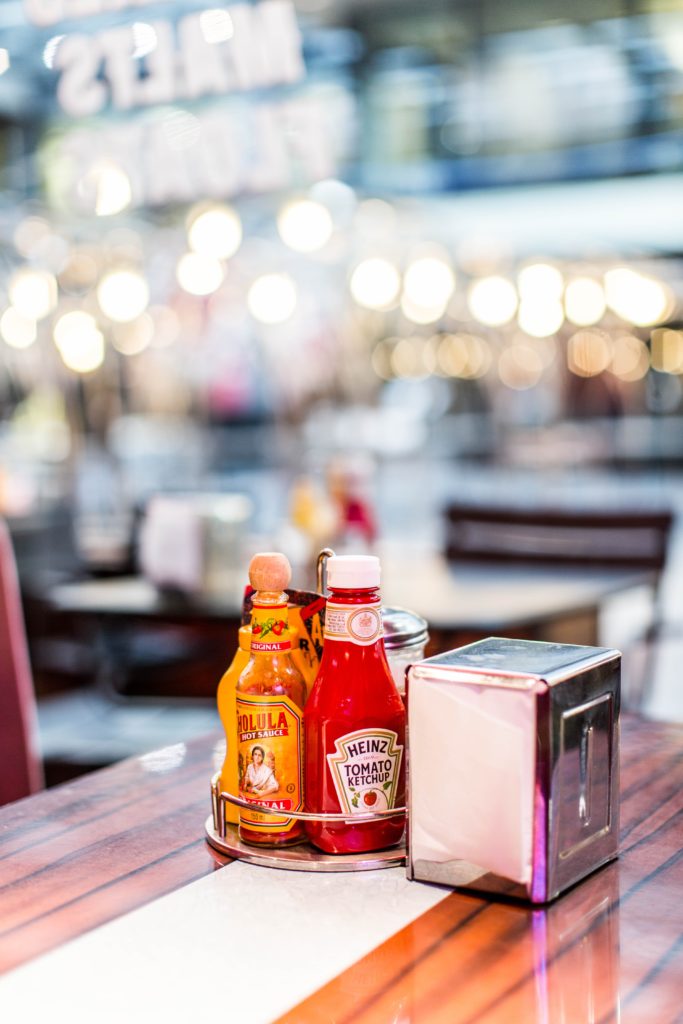All fields are required
Posted in Food Policy,Food Safety,Our Blog on March 5, 2019

Another day, another good bit of writing from Deborah Blum, dedicated chronicler of preservatives and poisons. We’ve written about the author of The Poison Squad here at Make Food Safe before, an excellent recent book by Blum that covers the development of modern food safety regulation and the Wild West landscape of dangerous additives and preservatives that preceded it. Today, we are going to talk about preservatives and Heinz ketchup.
Blum’s at it again, having recently published another short piece in National Geographic on the life of Henry Heinz, the inventor of Heinz Ketchup, and his contributions to food safety. Heinz’s sauce is familiar to us today: it’s a veritable American icon, seen in kitchens, diners, burger joints, and cafeterias across the country. Most of us could instantly pick the label, the distinctive shape of the bottle, even some of the ad copy (does anyone remember the number of varieties claimed, as declared on a distinctive white badge near the top of the bottle?) For most of us, Heinz is ketchup.
Prior to Heinz, however, ketchup was all kinds of things. “As the story goes, ketchup began as an Asian sauce made of fermented fish,” Blum writes. “Some say it was invented in China in the sixth century and named ke-tsiap. Others say it came from Vietnam, and still others argue for a different beginning in the West Indies.”
Ketchup wasn’t always made primarily from tomatoes at the time. Blum cites a number of ingredients that may sound surprising to our quaint modern sensibilities. The sauce was sometimes made with “ground pumpkin rinds, apple pomace (the skin, pulp, seeds, and stems left after the fruit was pressed for juice), or cornstarch, and dyed a deceptive red. One French cookbook author described the ketchup sold in markets as “filthy, decomposed and putrid.’”
It wasn’t just a grab-bag of strange ingredients that went into ketchup; in the 19th century, prior to the advent and adoption of modern chemical preservatives, there were also microorganisms present. Blum cites reports that mold and bacteria featured on a pretty regular basis. So, all in all, a fairly different kind of sauce: made from tomatoes, but not really, and often made from foodstuffs that were only tomato-adjacent at best; of uncertain cultural and geographic provenance; and generally contaminated with all manner of strange microbial nastiness.
That’s not all, however. One of Blum’s principal interests is the development of modern preservatives, and ketchup was one of the proving grounds on which novel chemical compounds with preservative properties were tested. After the mold and bacteria phase, but before the advent of Heinz’s preservative-free recipe, ketchup was often laced with an odorless, flavorless chemical called sodium benzoate
At the time, sodium benzoate was a new product. It’s colorless, tasteless, and has no detectable odor. It was also “enormously controversial,” according to Blum. The preservative had first been synthesized in 1860; it was adopted into widespread use in the following decades as its antimicrobial properties came to be seen as useful.
When Harvey Washington Wiley hit the scene in the early 20th century, he and his “poison squad” of volunteers began to systematically test different preservatives on the market to determine whether or not they were safe.
Wiley was no fan of sodium benzoate. According to Blum, “it was, he insisted, a serious health risk.” At the time, pushback against preservatives and systematic examination of the consequences of using different preservatives was relatively new. It’s worth noting that further investigation of sodium benzoate determined that it’s safe in small quantities, and that the compound is still used as a preservative in some foods today, albeit with much more restraint, and much less actual sodium benzoate, than was the fashion at the time.
Sodium benzoate’s latent reassessment notwithstanding, Wiley mounted a full-on public relations campaign against the preservative in his day. The exploits of his “poison squad” were front-page news at the time, drawing the attention of admirers and detractors both. Wiley was joined by Heinz, who shared his concern over preservatives and participated in the lobbying effort for then-president Theodore Roosevelt to sign legislation that would establish standards for food safety.
That pressure, Blum writes, was exacerbated by Upton Sinclair, who published The Jungle, an expose on the meat industry. Shortly after, the United States Congress passed two critical pieces of legislation, the Pure Food and Drug Act and the Meat Inspection Act, setting the table for our modern food safety system.
The debut of that legislation roughly matched the debut of Henry Heinz’s preservative free ketchup. The sauce was touted as being preservative-free and compliant with the Pure Food and Drug Act.
Although the ketchup was free of more novel preservatives like sodium benzoate, it wasn’t preservative free in the strictest sense. Instead, the shelf life of the sauce could be attributed to a particular blend of tomato pulp and acidic vinegar developed by Heinz’s cousin Samuel Muller. Blum writes that “He wanted a bacteria-killing acid concentration in the formula and so sought the right balance of vinegar and pectic acid, the latter occurring naturally in tomatoes. To get the acid levels right, Mueller discovered, he needed both high-quality tomatoes and high pulp content. Ketchups had traditionally been thin sauces of mixed content. To create its preservative-free ketchup, the company switched to a thicker, tomato-rich version—the foundation for the condiments of today.”
Voila – that’s how Heinz ketchup was born. Be sure to check out the National Geographic article for the full story.
By: Sean McNulty, Contributing Writer (Non-Lawyer)